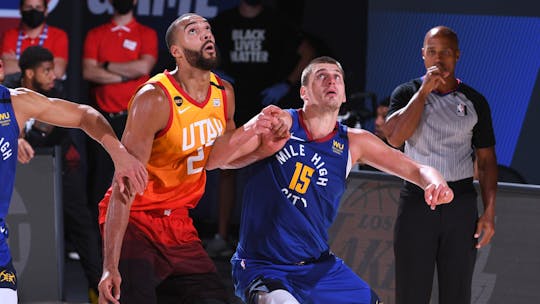Is there a shortage of American big men?
In the 2020 Tokyo Olympics, Team USA had Bam Adebayo, Draymond Green, and JaVale McGee as their bigs. They aren’t exactly the first players that come to mind when you think of the NBA's premier big men. Usually, you think of guys like Nikola Jokic and Rudy Gobert. Interestingly, Jokic and Gobert aren’t American. Most of the bigs currently dominating the NBA aren’t American, either.
If you look around the rosters in the league, most teams have an international player as their center. Teams like the Denver Nuggets and Utah Jazz have a dominant big man who started playing basketball across the globe. This is primarily because international players have a little bit of everything—they can shoot from the outside and score inside, pass and create plays, and do other things that not a lot of American big men are used to doing.
The game of basketball is played differently in different regions. For many years, players in America are used to seeing dominating big men like Shaquille O’Neal was in the late ‘90s and early 2000s—guys who are very stocky or muscular because they need all that strength to take over in the paint. These American big men usually play a more traditional type of basketball where they’re expected to crash the boards and post up on the block. That’s why these guys maximize their larger frames to avoid getting banged up when they’re constantly playing in the shaded area.
Then there are some international players who sometimes look less impressive than their American counterparts, who are not usually as athletic as the locals but they make up for it with their craftiness and basketball IQ. So, what’s the difference between the two?
First, the way the game is taught differently in countries outside of the U.S. In America, when you’re starting to hit six feet in your early teen years, coaches start to play you like a center. On the other side of the globe, players are often taught to play every single position regardless of their height. So as the kids grow bigger, their skill sets follow closely behind. By the time a player reaches seven feet, they already know how to play like a guard, forward, and center.
International players also grew up watching a different playing style, one that involves a lot more teamwork than individual skills. In other regions across the world, big men are expected to space the floor and help spread out the defense to unclog the lanes.
So maybe the reason why these international bigs aren’t big and all is because they don’t really need it. Unlike their American counterparts, they don’t necessarily have to bang bodies to create space.
The NBA has already shifted towards a different playing style—more uptempo and more spacing and 3-point shooting. Gone are the days where players run isolation plays for most of the game. Teams are now building systems around international players who are not limited to the post and can do pretty much everything on the floor.
Check out these NBA bigs and where they came from:
Nikola Jokic - Serbia
Giannis Antetokounmpo - Greece
Jusuf Nurkic - Bosnia
Kristaps Porzingis - Latvia
Rudy Gobert - France
Ivica Zubac - Croatia
Pascal Siakam - Cameroon
Domantas Sabonis - Lithuania
Jakob Poeltl - Austria
Steven Adams - New Zealand
Jonas Valanciunas - Lithuania
American players playing the forward and center positions in the NBA are the most affected by the shift in the way basketball is being played now. It’s tough to transition to the current playing style if you grew up configuring yourself to make a living in the paint by making hook shots, dunking, and blocking shots.
But international players come into the NBA already familiar with this uptempo game because they’ve been exposed to FIBA tournaments or the Euroleague which have been playing this type of basketball for years.
The list of international players in the league keeps getting longer every season. And as the NBA game continues to evolve, more teams will look overseas and recruit international players who are more equipped for this new playing style.




